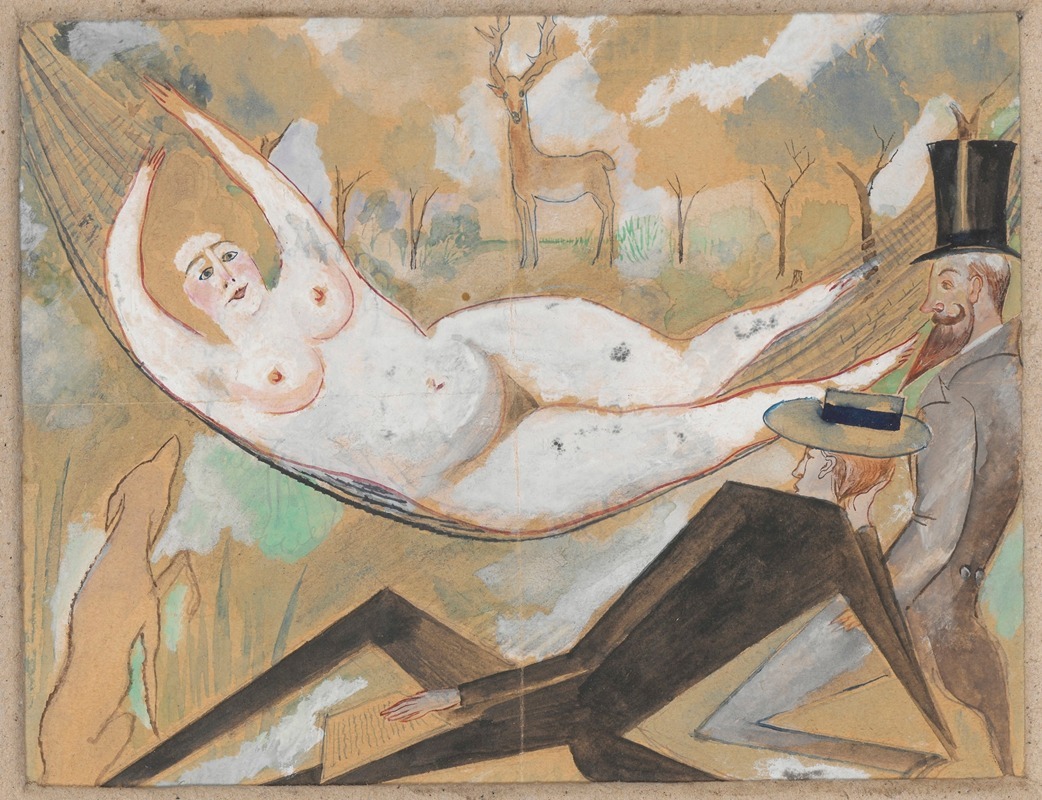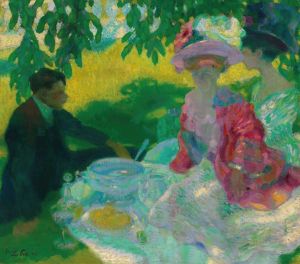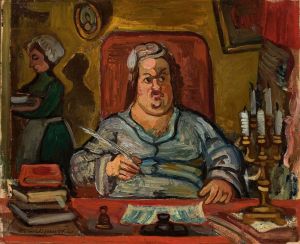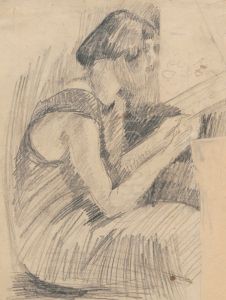
In a hammock
A hand-painted replica of Zygmunt Waliszewski’s masterpiece In a hammock, meticulously crafted by professional artists to capture the true essence of the original. Each piece is created with museum-quality canvas and rare mineral pigments, carefully painted by experienced artists with delicate brushstrokes and rich, layered colors to perfectly recreate the texture of the original artwork. Unlike machine-printed reproductions, this hand-painted version brings the painting to life, infused with the artist’s emotions and skill in every stroke. Whether for personal collection or home decoration, it instantly elevates the artistic atmosphere of any space.
Zygmunt Waliszewski was a prominent Polish painter known for his contributions to the modern art movement in Poland during the early 20th century. Born in 1897 in Saint Petersburg, Russia, Waliszewski moved to Poland where he became an influential figure in the Polish avant-garde scene. His works are characterized by vibrant colors and a unique blend of styles, drawing inspiration from both traditional Polish art and contemporary European movements.
"In a Hammock" is one of Waliszewski's notable paintings, although specific details about the painting's creation, such as the exact year it was painted, are not widely documented. The painting exemplifies Waliszewski's distinctive style, which often incorporated elements of Post-Impressionism and Fauvism. His use of bold colors and dynamic compositions reflects the influence of artists like Paul Cézanne and Henri Matisse, whom Waliszewski admired.
The subject matter of "In a Hammock" aligns with Waliszewski's interest in capturing everyday scenes infused with a sense of tranquility and introspection. The painting likely depicts a serene outdoor setting, with a figure reclining in a hammock, surrounded by lush, expressive brushwork that conveys the vibrancy of nature. This theme of leisure and relaxation is a recurring motif in Waliszewski's work, reflecting his fascination with the interplay between humans and their environments.
Waliszewski's artistic journey was shaped by his education and experiences across Europe. He studied at the Academy of Fine Arts in Kraków, where he was exposed to various artistic movements and techniques. His travels to Paris further enriched his artistic perspective, allowing him to engage with the works of leading modernists of the time. This exposure is evident in the way he synthesized different styles to create his own unique visual language.
Despite his relatively short life—Waliszewski passed away in 1936 at the age of 39—his impact on Polish art was significant. He was a member of the influential "Formists" group, which sought to break away from traditional art forms and embrace modernist principles. Through his work, Waliszewski contributed to the development of a distinctly Polish modern art identity, blending international influences with local themes and sensibilities.
"In a Hammock" is a testament to Waliszewski's ability to capture the essence of a moment through his expressive use of color and form. While specific details about the painting's provenance or current location may not be readily available, its significance lies in its representation of Waliszewski's artistic vision and his contribution to the broader narrative of modern art in Poland.
Overall, Zygmunt Waliszewski remains a celebrated figure in Polish art history, and "In a Hammock" exemplifies his mastery in creating works that resonate with both aesthetic beauty and emotional depth. His legacy continues to inspire contemporary artists and art enthusiasts, underscoring the enduring appeal of his innovative approach to painting.

















